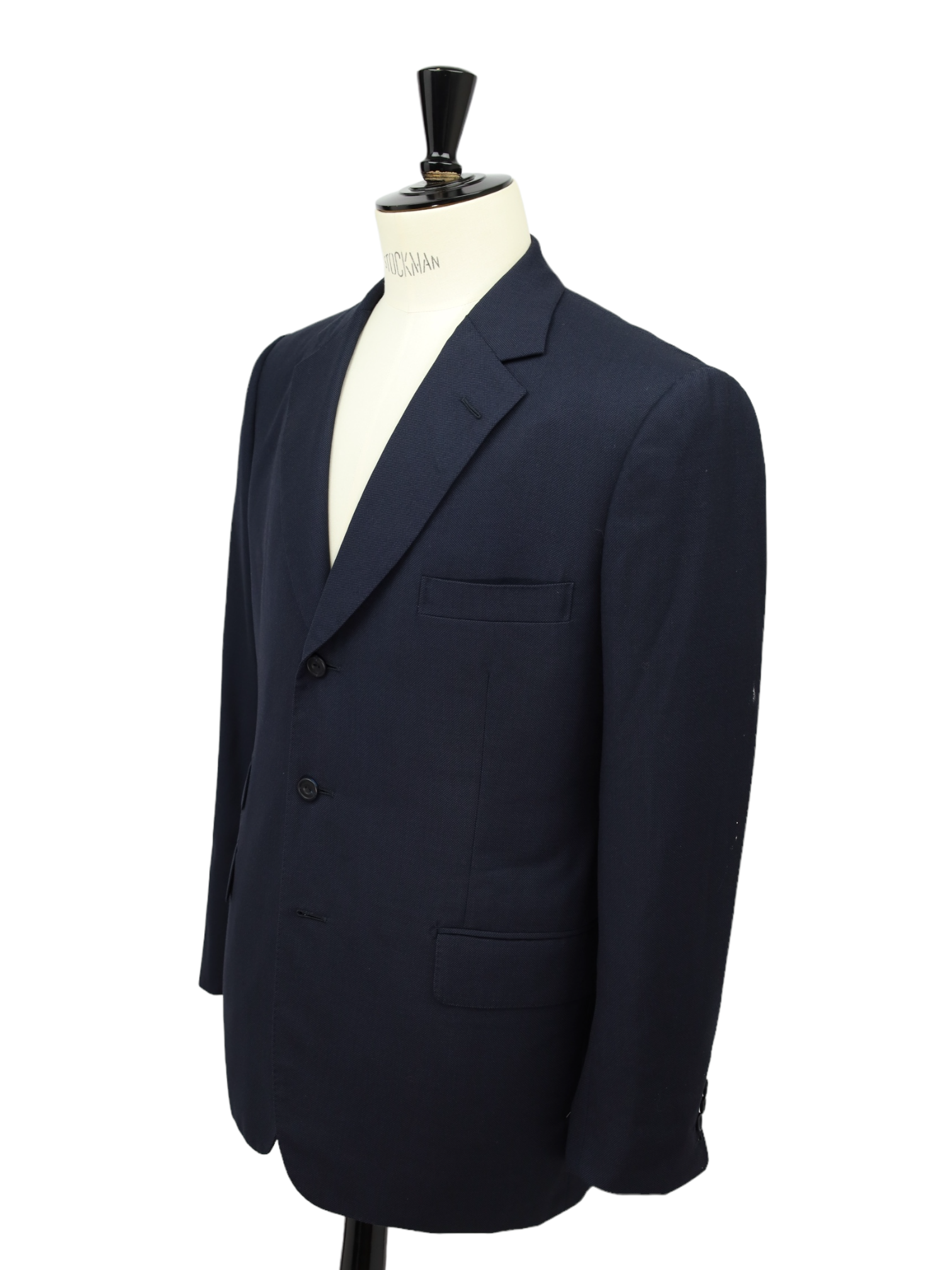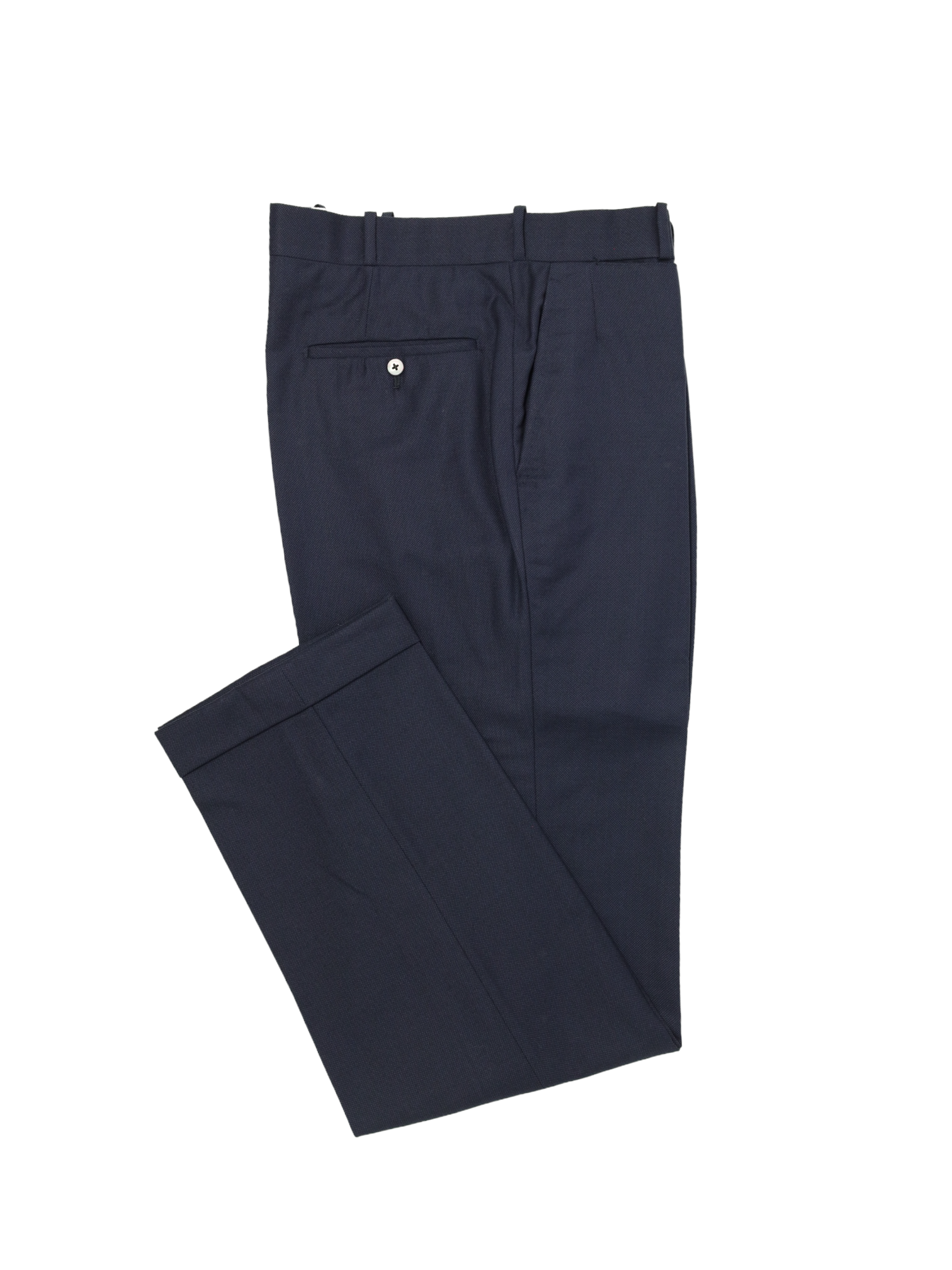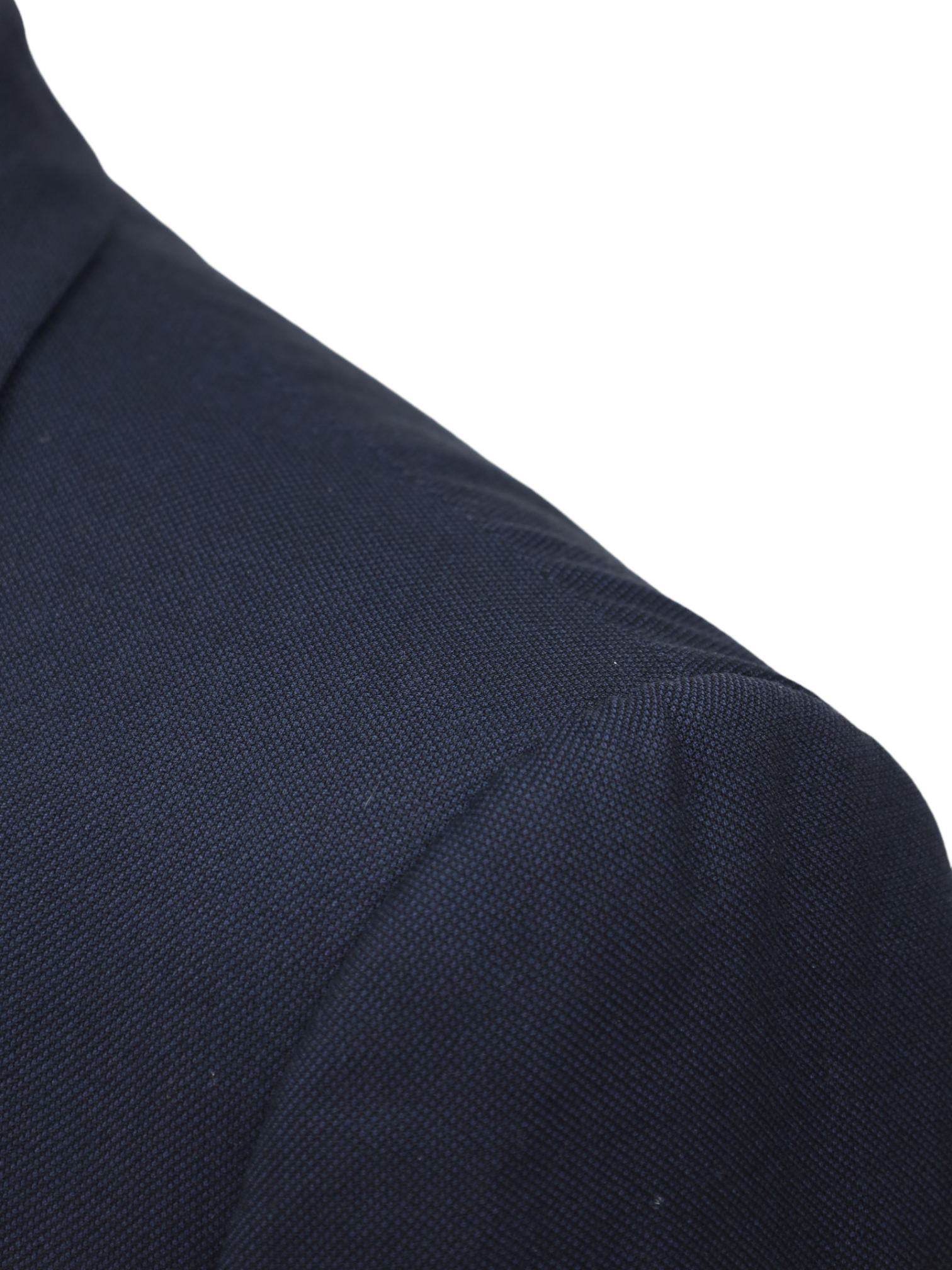







Henry Poole Navy Bespoke Birdseye Suit
50 IT / 40 US / Large
Introducing the Henry Poole Navy Bespoke Birdseye Suit, a testament to timeless tailoring and classic design. Crafted in 2013, this heavy-weight suit features a distinctive birdseye fabric that adds a subtle texture to its deep navy color. Designed with a classic three-button closure, it exemplifies traditional bespoke tailoring with a focus on meticulous craftsmanship and personalized fit.
This suit represents the enduring quality of Henry Poole’s craftsmanship, known for its commitment to exceptional tailoring standards and historical significance in men’s fashion. Ideal for both formal occasions and important business meetings, this bespoke suit is not only a piece of clothing but a piece of history, tailored to stand the test of time. Discover the elaborated sartorial details below.
Composition: 100% Wool
Color: Navy
Pattern: Birdseye
See how we measure our sartorial items
Discover the customization possibilities by visiting our tailor alteration guide
Shipping
- Complimentary shipping on orders over €200 (Netherlands), €500 (EU), and €1,000 (rest of world).
- Orders under these amounts: shipping rates depend on your country.
- Customs duties or import fees may apply and are the customer’s responsibility. The courier may charge additional fees.
Returns
- You have the right to return your order within 14 days of delivery.
- If you wish to return an item, please notify us within 48 hours of receiving your order.
- Return shipping is at the customer’s expense.
- A 10% restocking fee will be deducted from your refund for all returns.
Please carefully review all measurements and quality control notes in the listing before purchasing. Return shipments have an environmental and economic impact. For any questions or if you need help, feel free to contact us before placing your order.
General Note: While we inspect each item to ensure its quality, please note that minor imperfections may be present due to the preloved nature of the garments. We strive to represent every item accurately, but subtle signs of wear may sometimes go unnoticed. We appreciate your understanding and commitment to sustainable luxury.
Choose options









Discover the
Sartorial Details

Full Canvas Construction
A sartorial jacket - or coat - needs an interlining that will help give it shape and mold it. Canvas gives the item a tailored and crafted look. In short, it breathes life into it. Purely technical, canvas is made from either horsehair, wool, mohair or camel hair. It could also be a mix of them all, with varying thickness and weight. The canvas is stitched to the jacket, often by hand, thus making the canvas pieces 'floating' in the middle of the inner and outer cloth. This gives the jacket added flexibility. The canvas runs from the upper parts, all the way down to the end of the jacket. After you wear your canvassed suit for a while, it will begin to take your shape and look incredibly natural.

Roped Shoulders
A roped shoulder - or sleeve - head describes the bumped shape or ridge of the sleeve’s attachment to the shoulder. The higher it is, the more imposing the shoulder line appears. This can often be found in iconic British tailoring.

Handmade Buttonhole
Handmade buttonholes are made using a chain of knotted loops called purl stitches that make them strong and visually distinctive. It takes about five seconds to sew a regular buttonhole with a machine – a single handmade buttonhole takes about 10 minutes to sew.

Three-Button Closure
Originating from the late 19th and early 20th centuries, the three-button suit closure evolved as a staple in menswear, striking a balance between the more casual two-button and the formal full-buttoned designs. This middle-ground choice quickly became favored for its versatility, offering a neat, elongated silhouette that stood synonymous with both business elegance and everyday sophistication. Over the years, its popularity has seen ebbs and flows, yet it remains a timeless classic in the annals of fashion history.

Chest pocket - Rounded welt pocket
The shape of a Savile Row tailor chest pockets are typically rectangular or slightly angled. It is designed to be narrower and smaller in size compared to the jacket's main flap pockets. The pocket's dimensions are carefully considered to maintain a balanced and proportional look on the chest of the suit.

Darts
The tailors adds two darts - think of them as pinched seams - to ensure the jacket’s body achieves a slim silhouette. The process, called mezzo punto riprese, is done entirely by hand.

Buttons and Buttonholes
Also known as stacked buttons or waterfall buttons, kissing buttons are associated with Italian tailoring as Italian tailors make their jacket sleeve buttons in the kissing style. In this style, buttons touch each other and overlap one another. Handmade buttonholes; Even this step, apparently the simplest, is treated with an abundance of detail. Attaching the buttons is a job that requires patience and must be completed to perfection.

Ticket Pocket
The ticket pocket, also known as change pocket, has an old British history. At first it wasn’t even used to store a ticket, as the name indicates today. It became useful before the huge popularity of the railroad, as it was placed on the jackets of equestrians who needed quick access to coins at toll points. Allowing gentlemen to keep their jackets buttoned, this exterior pocket held cash in an extremely convenient way. Ticket pockets were a staple on men’s sturdy country suits before they adapted into the urban suits men wore to commute on a daily basis.


size
50 IT / 40 US / Large


 Curator's Description
Curator's Description Materials
Materials